Matador Network's Blog, page 937
January 22, 2020
Emotional support animal regulations

It seems the days of the emotional support peacock may be coming to a close.
Granted, the need for legitimate service animals is certainly at the forefront of national transportation policy, and plenty of people have emotional support animals for legitimate reasons. But anyone who’s been on a flight with a barking dog or seen one pee on the floor in the concourse knows some people have been skirting those rules of legitimacy.
And the US Department of Transportation is cracking down.
Today it proposed amendments to its Air Carrier Access Act severely limiting what, exactly, can be considered a service animal, and what will be required to get them on board.
In a statement released today, the USDOT issued a notice for proposed rulemaking on travel by air with service animals. The gist of the new rules effectively close the loophole allowing people to claim their pet is for emotional support without proper training, thus avoiding extra fees and keeping the animals in pet compartments. The new rules will require legitimate service training and certification for an animal to be allowed on for “emotional support.”
Specifically, the USDOT will define service animals as ones who have been trained to do work or support tasks for someone with a disability. Emotional support animals will no longer be considered service animals and therefore subject to the usual pet regulations aboard aircraft.
Of course, some people do need animals aboard for psychiatric reasons, but those dogs will also require the same training as service animals for people with physical disabilities.
People will be limited to two service animals per person, and they must fit in the space under the seat and be leashed or tethered. Airlines will also be allowed to require passengers to provide DOT forms showing the animal has good behavior and can take a long flight without relieving itself on the floor.
It should be noted that most airlines already require complex paperwork to board a plane with an emotional support animal — individualized to each airline — including letters from a mental health professional, agreements signed by doctors and the passenger, and certificate of health from vets. And many airlines require new documentation each and every time you board a plane or require renewal after a certain time frame.
So the idea that people are waltzing onto the plane with fraudulent ESAs and taken at their word is not true. If the animal is not a legitimate ESA, then it would have had to get falsified medical documents. Clearly, though, some people still find a way to abuse the system — making it even more complicated now for those with mental health issues assuaged by animal companions during flights.
USDOT provided a number of other regulations and provisions, and you can read the whole thing here if you want to drill down the details. The public has 60 days to comment before the new rules go into the register. 

More like this: Everything you need to know about your rights for flying with pets
The post USDOT looks to end the era of emotional support animals on airplanes appeared first on Matador Network.

Iguanas fall from trees in Florida

Cold weather brings many dangers, like frostbite and hypothermia, but falling iguanas doesn’t typically crack the list. Well, a freeze warning is now in effect from Louisiana to the Carolinas, and the National Weather Service in Miami has issued a particularly rare warning. “Don’t be surprised if you see iguanas falling from the trees tonight,” they tweeted. That’s right. As if worrying about falling icicles wasn’t enough, now people have to look skyward to make sure green lizards aren’t falling on their face.
Jan 21 – This isn't something we usually forecast, but don't be surprised if you see Iguanas falling from the trees tonight as lows drop into the 30s and 40s. Brrrr! #flwx #miami pic.twitter.com/rsbzNMgO01
— NWS Miami (@NWSMiami) January 21, 2020
Iguanas often sleep in trees and become sluggish once the temperature dips below 50 degrees, meaning they could potentially go into a cold-stunned state and drop from trees. Since the cold-blooded lizards can weigh up to 20 pounds, this could pose a danger to unsuspecting humans walking below.
Some iguanas are insulating themselves from the cold by going deep into burrows, but if you see a fallen iguana stiff on the ground, don’t assume it’s dead and leave it be or move it to a safe spot — as soon as the temperatures go up again, it’ll likely be reanimated. 

More like this: 7 adorable animals that are actually super dangerous
The post Watch out for falling iguanas, warns National Weather Service appeared first on Matador Network.

January 21, 2020
What to do in Boston’s Little Italy

It sounds like something a drunk Red Sox fan would scream outside Yankee Stadium to incite a riot. “The best Little Italy is in Boston” isn’t just an inflammatory remark meant to piss off New Yorkers — it’s a sentiment familiar to many who have visited the small neighborhood in Boston’s North End and enjoyed its unique character, cuisine, and aesthetic.
Chances are, when you think of Boston, you’re thinking of Little Italy. Cobbled streets, waterfront promenades, and historic churches define the North End, which was the first neighborhood in the city. Formerly a bastion of Revolutionary War soldiers, then an Irish district, and a center of Italian culture and cuisine since the early 1900s, the North End isn’t just about spaghetti and meatballs but delicious pastry shops, dozens of festivals, and some of the city’s best nightlife. Sorry, New York. Boston’s Little Italy is the best in the country, and here’s why.
Food like your grandma used to make

Photo: cdrin/Shutterstock
There’s a time and place for cheeseburgers and quesadillas, and the North End isn’t it. When it comes to dining in Little Italy, it’s all about pappardelle, meatballs, fish, and, of course, pizza. If you’re looking for a blend of atmosphere and flavor, it’s tough to go wrong here. To dive right into the Boston Italian culinary experience — and for a pretty good date spot, too — check out Mamma Maria in North Square. Housed in a 19th-century rowhouse, this restaurant has five private dining rooms, a pasta-heavy menu, and panoramic views of the North End.
To take in New England’s fresh seafood tradition with Italian cuisine, head to Rabias Seafood on Salem Street. Try the fra diavolo alla Mediterranea (octopus, shrimp, calamari, clams, mussels, linguine, and tomato sauce) or the gamberi dorati (shrimp, lobster ravioli, roasted red peppers, artichoke hearts, scampi sauce).

Photo: Ernestos Pizza North End/Facebook
No matter how full you may be from dinner, there’s always room for pizza. Take a walk through North Square, check out the waterfront, and before you know it you’ll be ready for second dinner. There’s a hot debate over Boston’s best pizza, with Regina’s (North End) and Santarpio’s (East Boston) regularly winning out, but if you only have one slice in Boston’s Little Italy, make it from Ernesto’s on Salem Street. This little eatery has been a neighborhood favorite for over 30 years and somehow manages to avoid the hype that plagues its competitors.
Leave the gun, take the cannoli
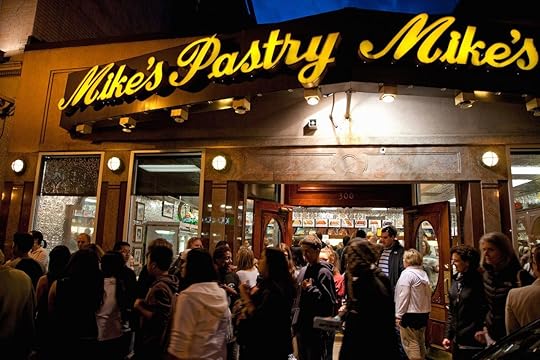
Photo: Joseph Sohm/Shutterstock
Unlike some of its pizza joints, the North End’s more notable dessert spots definitely live up to the hype. Mike’s Pastry on Hanover Street is the most famous pastry shop in Boston, with people regularly coming from outside the city just for a box of their cannolis. Indeed, the “Home of the Cannoli” moniker is well-earned. Since 1946, Mike’s has been a staple of the community, offering up dozens of varieties of cannolis, cookies, pies, and cakes. Just be prepared for a solid 15 minutes of indecision while you figure out which cannoli you want. The options are seemingly endless and include espresso, chocolate mousse, oreo, hazelnut, peanut butter, limoncello, and pecan caramel cannolis.

Photo: Bova’s Bakery/Facebook
Bova’s Bakery on Salem Street is another Boston classic, and it dates even farther back than Mike’s. Since 1926, Bova’s has served the local community homemade Italian cookies, pastries, pies, baked bread, and even sicilian pizza. Between these two pastry shops, you should be able to find any Italian dessert your sweet-tooth desires.
Eat like the Italians, but party like the Irish
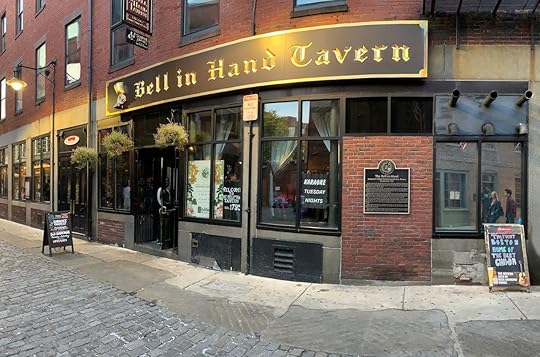
Photo: m_sovinskii/Shutterstock
The best part about the North End is that you can pretty much spend the entire day in this part of the city and have a complete Boston experience without needing to venture anywhere else. It’s a given that Little Italy will have an abundance of delicious food, but when Happy Hour rolls around and you start getting thirsty, look no further than North End nightlife.
If you’re someone whose friends are always telling you, “You’re really funny; you should take improv,” then you’re in luck. Assuming they’re not just being sarcastic, the Improv Asylum on Hanover St. is a unique venue that’s probably right up your alley. This improvisational comedy theater puts on several shows every week, which blend sketch comedy and improv scenes. And if you’ve always wanted to try your own hand at improv, they even offer classes in comedy writing, improv, and musical improv.
For those looking for a more fist-bumping nightlife experience, Bell in Hand Tavern is your spot. Claiming to be the oldest bar in Boston — it opened in 1795 — Bell in Hand has something for everyone. The downstairs has live music, a bar, and a dance floor while the upstairs has DJ music, two dancefloors, and two bars. If you tell someone in their 30s you’re going to Bell in Hand, they’ll probably reply with a hint of condescension, “What is it, your 21st birthday?” It’s true, the crowd here is pretty young, but if you’d rather party like a 21-year-old than sip craft beers next to suited young professionals, this is the place for you.

Photo: jenlo8/Shutterstock
Being in Little Italy might not inspire you to visit an Irish pub, but in Boston it’s almost mandatory. Just a few streets over on Union and Marshall, right behind Bell in Hand, several Irish pubs line the road, making it easy to blend your day in Little Italy with the famous Boston Irish experience. You can’t go wrong with Hennessey’s, Paddy O’s, or The Green Dragon, which are all staples of Boston’s Irish pub scene.
Four months of festivals

Photo: James Kirkikis/Shutterstock
Summer is festival season in Little Italy. Pretty much every weekend from the beginning of June to mid-September has a feast, festival, or procession you can look forward to, all steeped in Italian tradition. The season typically kicks off the first weekend of June with the Santa Maria di Anzano Procession, which involves a procession down the cobbled streets, a church service, and, of course, a hearty feast.
The next event to look out for is the St. Agrippina di Mineo Feast, which takes place in early August. In addition to street food like pasta, fried calamari, arancini, shellfish, and cannoli, the festival has live music and DJ concerts, and even a charity raffle. Seafood-lovers will want to keep an eye out for the Fisherman’s Feast, which usually takes place in mid-August and follows the traditions of fisherman coming to Boston from Sicily in the early 1900s. Stalls of fresh fish, meats, music, and games will take over the streets of the North End, and it’s all run by the descendants of the original Sicilian fishermen.
If you only go to one festival in Boston’s Little Italy, however, it should be Saint Anthony’s Feast at the end of August. One of Boston’s oldest festivals, celebrated since 1919, Saint Anthony’s Feast is the largest Italian religious festival in New England. Dubbed the “Feast of all Feasts,” this four-day festival has parades, singers, live entertainment, contests, religious services, and, of course, more Italian street food than you can handle. 

More like this: 7 of the best Little Italys in America you probably haven’t been to
The post The best Little Italy is in Boston, and it’s not even close appeared first on Matador Network.

Worst cities for bed bugs

“Don’t let the bedbugs bite” is a saying so cliche it’s almost lost all meaning, but that doesn’t mean bed bugs aren’t a real issue in many cities across the US. Indeed, according to a ranking of the top 50 US cities for bed bugs by pest control company Orkin, the bed bugs are biting all over the place, maybe even in places where we least expected it. According to the study, which examined cities where the most bed bug treatments were performed in 2019, some of America’s largest cities are among the worst bed bug victims.
Based on treatment data from metro areas where Orkin performed the most bed bug cleanups, Washington, DC, took the not-so-coveted first place on the list, followed by Baltimore, Chicago, Los Angeles, and Columbus. New York City was only number six, despite being the city most commonly associated with bed bug issues.
Orkin entomologist Chelle Hartzer said, “They can be an elusive threat to households. They are excellent hitchhikers and they reproduce quickly which makes it nearly impossible to prevent bed bugs.”
Since bed bugs are known for multiplying rapidly, they are quite difficult to eradicate. That doesn’t mean all hope is lost, however. According to Hartzer, “The key to preventing a bed bug infestation is early detection. When one or more bed bugs enter a space, we call it an introduction. During an introduction, bed bugs probably haven’t started reproducing yet, but they could soon. Vigilance is key to stopping bed bugs before infestation levels.”
For the full top 50 list, visit Orkin’s website. 

More like this: How to check your hotel room for bed bugs
The post Washington, DC, is the worst city in the US for bed bugs, according to new data appeared first on Matador Network.

First US case of Chinese coronavirus

The first US case of the human coronavirus has been reported in Washington state, according to the Center for Disease Control and Prevention (CDC). The deadly virus, which has already killed six people in China, afflicts victims with fever, cough, difficulty breathing, and pneumonia. According to the CDC and Washington state officials, the afflicted man is in his 30s and remains in good condition at the hospital.
The virus originated in China, where hundreds have been affected. Most cases occurred in the city of Wuhan, but it has also spread to other areas of the country, as well as Thailand, South Korea, Japan, and now the US. Many initial cases were linked to a seafood market in Wuhan — the market has since been closed — and Chinese health officials confirmed this week that the virus can be transmitted both by humans and animals.
According to Robert Glatter, an emergency physician at New York’s Lenox Hill Hospital, the virus can lead to a severe form of potentially deadly pneumonia and particularly affects those with a history of chronic lung disease.
“We must be vigilant,” says Glatter, “to ensure that adequate screening processes are in place at all US airports.”
If you are traveling to Wuhan, the CDC advises that you avoid animals, animal markets, and contact with sick people. If you’re traveling from China to the US, expect to be asked questions about your health history upon arrival.
As the virus is still relatively new, there is no vaccine yet. The best remedies right now are the same as for patients with colds — plenty of rest and hydration. 

More like this: Study shows that security trays are actually the grossest part of flying
The post First case of deadly Chinese coronavirus reported in the US appeared first on Matador Network.

David Attenborough documentary

The newest documentary from legendary British broadcaster and naturalist David Attenborough is coming out soon, and it’s not exactly a feel-good movie. The environmentalist and voice behind “Blue Planet,” “Planet Earth,” and “Seven Worlds, One Planet,” among many others, is urging the world to take action against the climate emergency in his upcoming documentary, “David Attenborough: A Life on Our Planet.”
“The living world is a unique and spectacular marvel,” he says, “yet the way we humans live on Earth is sending it into a decline. Human beings have overrun the world. We’re replacing the wild with the tame.”
In an interview about the film, Attenborough told the BBC, “We have to change, not by appeals to different kinds of optimism but to deliberate, compelling life or death decisions […] We have to realise that this is not playing games […] This is an urgent problem that has to be solved.”
Attenborough isn’t completely cynical, however. He added that he is hopeful for a shift in public opinion that might spur immediate and effective action.
The documentary will premiere at London’s Royal Albert Hall on April 16, 2020, but here’s the trailer to tide you over. 

More like this: These 5 major cities are sinking rapidly into the sea
The post David Attenborough says our planet faces ‘disaster’ in trailer for new documentary appeared first on Matador Network.

Best architecture in Barcelona
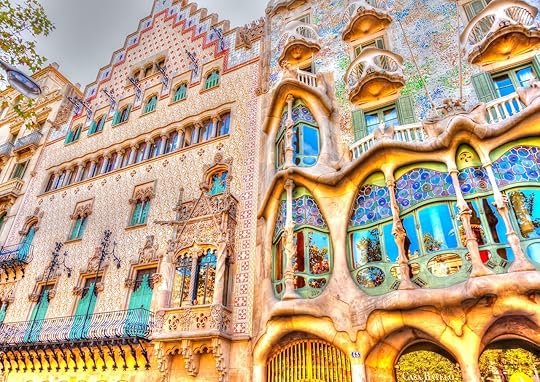
Antoni Gaudí is the emblematic architect of Barcelona. The visionary creator enriched the aesthetics of the city in the late 1800s and early 1900s with his bright colors, organic shapes, undulating surfaces, and unique use of patterns. However, the streets of Barcelona display a heritage that expands far before and beyond the life of Gaudí. The Romans founded Barcelona (then Barcino) in the first century BC, and every century since has left its mark upon the city. If you’re keen to see the most beautiful buildings in the city but only have a limited amount of time and money, follow our guide for a crash course and an easy tour of the most iconic architectural pieces in Barcelona. It’ll only cost you the price of a metro ticket and decent walking shoes.
1. Catedral de Barcelona (and the surrounding Barri Gòtic)

Photo: TTstudio/Shutterstock
Reach the staggering Catedral de Barcelona by getting off at the Jaume I stop of the L4 (yellow) line. Walk through the Plaça de l’Angel and follow the Baixada de la Llibreteria, then turn right onto Carrer de la Freneria and walk northwest until you hit the back of the cathedral. Just continue onto Carrer dels Comtes to reach the front.
This gothic cathedral was built atop the foundations of an early Christian church that dates back to the fourth century. It took approximately 150 years to build, beginning in 1298. It is notable for its impressive size, ornate facade, gargoyles, and carved pinnacles. If you visit on a weekday between 8:30 AM and 12:30 PM or 5:45 PM and 7:30 PM, you can get in for free. If you visit within the second time slot, be sure to enter using the door to the right of the main facade. If you visit outside of these timeframes, there is a seven euro ( $7.80) fee for tourists.
After you check out the cathedral, take a stroll in the surrounding Barri Gòtic (Gothic Quarter) and immerse yourself in the medieval and neo-gothic structures. Notable streets include Carrer del Cardenal Casañas (which contains the Plaça del Pi) and Carrer dels Escudellers (which includes the Plaça George Orwell).
Where: Pla de la Seu, s/n, 08002 Barcelona
2. La Sagrada Família

Photo: Valery Egorov/Shutterstock
Find this iconic structure and incredible Gaudí invention by taking either the L2 (purple) or L5 (blue) metro lines to the Sagrada Família stop. La Sagrada Família is a large, unfinished basilica — an ambitious project that initially began in 1882. Certain parts of the church that were executed under Gaudí’s designs are designated as an official UNESCO World Heritage site. The columns in the frontal facade are angled in such a manner that they seem alive, as they stretch towards the pinnacles. The facade also contains figurative sculptures that depict Christian scenes in a modernist manner.
You need to pay 20 euros ($22.25) to enter La Sagrada Família, but the basilica is most impressive when viewed from the outside. Grab a snack from one of the nearby cafes on Carrer de Mallorca, sit on a bench in Plaça de la Sagrada Família, and take in the view. However, if you want to visit the church for religious purposes, know that there is a public mass every Sunday at 9:00 AM.
Where: Carrer de Mallorca, 401, 08013 Barcelona
3. Casa Batlló

Photo: Alan Tan Photography/Shutterstock
This beautiful building is directly across the street from the Passeig de Gracia metro stop, accessible via the L2 (purple), L3 (dark green), and L4 (yellow) lines. The Passeig de Gracia is also a train station, so you can see Casa Battló by exiting here if you enter Barcelona by rail. Prominent Catalan businessman Josep Battló bought this property on the Passeig de Gracia in 1903, and he selected Antoni Gaudí to remodel the building into an artistic, one-of-a-kind home for his family. This fantastical building is impossible to miss — its technicolor, curved roof looks like the skin of a dragon, and the frontal facade is coated in a shimmering pattern.
Today, Casa Battló is a museum with an entry fee of 25 euros ( about $27.90). If you have a deep interest in architecture, this is one item on the list that may be worth the price. However, for most visitors, Casa Battló is best when viewed in the full context of the Passeig de Gracia. The Passeig is an iconic boulevard, and Casa Battló is only one magical element that contributes to the total, grand experience of strolling along this street.
Where: Passeig de Gràcia, 43, 08007 Barcelona
4. Estación de França

Photo: Felix Lipov/Shutterstock
Find the Estación de França by taking the L4 (yellow) line to Barceloneta. This train station is the most beautiful in the city and has a perfect location between the waterfront and trendy El Born neighborhood. The Estación de França was built in 1926, and it officially opened for the 1929 World Fair. The 1929 World Fair is significant in Barcelona’s history, as it drove the construction and renovation of many buildings that gave Barcelona its international reputation as a tourist destination.
The Estación de França has an entryway that is designed with a mixture of modernist and Art Deco influences. It has a simple, restrained color scheme with marble, bronze, and crystal as the main materials. If you stand outside the front of the station, be sure to note the tiny owl statues, which are strategically placed to scare pigeons!
Where: Avenue del Marquès de l’Argentera, s/n, 08003 Barcelona
5. Mercat Santa Caterina

Photo: Helioscribe/Shutterstock
To reach the Santa Caterina Market, take the L4 (yellow) metro line to Jaume I. Walk northwest for on Via Laietana, then take a right at the Plaça d’Antoni Maura onto Avinguda de Francesc Cambó. You won’t be able to miss this building.
Santa Caterina Market was initially established in 1845 as the first covered food market in Barcelona. It was vitally important to the local population after the Spanish Civil War, as people traveled here from nearby towns for nourishment during food shortages. The facade of the market harkens to the original building, but during refurbishment in 2005, a vivid, curvy, mosaic roof was added to the top. You can stop by Monday, Wednesday, and Saturday from 7:30 AM to 3:30 PM or Tuesday, Thursday, and Friday from 7:30 AM to 8:30 PM. The market is free to enter, but you might want to bring some euros to sample some tapas or jamón.
Where: Avenue de Francesc Cambó, 16, 08003 Barcelona
6. Suites Avenue

Photo: PlusONE/Shutterstock
Suites Avenue can be reached by taking the L3 (dark green) or L5 (blue) metro to Diagonal and walking on the Passeig de Gracia. It is close to Casa Battló, so you can also reach it by exiting the Passeig de Gracia metro stop and walking northwest for a few minutes. This striking, contemporary building was designed by famous Japanese architect Toyo Ito. It opened in 2009 as a luxury hotel, fit with tourist apartments, a spa, and a communal rooftop terrace. Obviously, most of us cannot afford the accommodations of Suites Avenue, but this is yet another building that is best appreciated from the outside.
Suites Avenue has an impressive, stainless steel facade that is composed of curving, cut-out strips of metal. It plays off the modernist design of a building on the opposite side of the street: Gaudí’s La Pedrera. Stand in the middle of the Passeig de Gracia and glance back and forth at these two structures, which were formed about one century apart. It will feel as though you are travelling in time.
Where: Passeig de Gràcia, 83, 08008 Barcelona
7. Temple of Augustus

Photo: Marco Rubino/Shutterstock
The Temple of Augustus is near the Jaume I metro stop, which is a part of the L4 (yellow) line. When you exit the metro, walk on Carrer de Jaume I for fewer than five minutes. When you hit the Plaça de Sant Jaume, take a right onto Carrer del Paradís. The temple ruins are housed inside the Museu d’Historía de Barcelona, which is located at Carrer del Paradís 10.
The temple ruins are a testament to Barcelona’s Roman past. Barcelona was founded as a Roman colony, Barcino, and this structure dates all the way back to the first century BC. The columns were initially discovered near Plaça Sant Jaume, which you pass on your walk to the museum. In fact, Plaça Sant Jaume exists in what used to be the center of Roman Barcino. Sit and look at the columns, and you can imagine the people that came here to worship in the days of the ancient colony.
The Temple of Augustus is free to visit. You can enter the museum on Monday from 10:00 AM to 2:00 PM, Tuesday through Saturday from 10:00 AM to 7:00 PM, and Sunday from 10:00 AM to 8:00 PM.
Where: Carrer del Paradís, 10, 08002 Barcelona
8. Jean Nouvel’s Torre Glòries

Photo: Felix Lipov/Shutterstock
Formerly known as the Torre Agbar, the Torre Glòries is a contemporary skyscraper in the middle of the city. You can reach this destination by taking the L1 (red) metro line to Glòries, or by taking any of the tram lines to Glòries.
The Torre Glòries was built in 2003 based on the designs of a collaborative effort between French architect Jean Nouvel and Barcelona’s b720 architectural firm. The curved tower stands 472 feet tall in the shape of a bullet. It is coated in glass, which reflects the surrounding colors of the sky, city, and Mediterranean sea. It is best to visit the tower at night because it lights up in a magnificent, rainbow display. If you take the metro to the Glòries stop, the surrounding Plaça de las Glòries Catalanes provides the perfect base for snapping photos.
Where: Avinguda Diagonal, 211, 08018 Barcelona
9. Mercat Els Encants Vells

Photo: frantic00/Shutterstock
The Encants Vells is a flea market with roots stretching back to the 1300s. It is very close to the Torre Glòries — get off at the Glòries metro stop and simply walk south on the Avinguda Meridiana. This market is yet another impressive, contemporary structure in the heart of Barcelona. It is an open-air plan, but the canopy is 109,272 square feet of minimalist, layered mirrors. It was built according to the designs of architect Fermin Väzquez in 2013, and today it stands as one of the city’s iconic landmarks.
You can visit the market and its 500 stalls of antique vendors on Mondays, Wednesdays, Fridays, and Saturdays from 9:00 AM to 8:00 PM. Like the Mercat Santa Caterina, it is free to enter, but you will probably want to buy at least one souvenir once you’re inside.
Where: Carrer de los Castillejos, 158, 08013 Barcelona 

More like this: 8 rooftop bars in Barcelona to take in the city’s nightlife
The post Iconic Barcelona architecture that you can check out for free appeared first on Matador Network.

Where to spot celebrities in LA

You go to Los Angeles for the blue skies and palm trees, for the inventive California cuisine and iconic attractions — all legit reasons to visit La La Land. But come on, you know you want to see a celeb. Admit it. Sure, an Instagram post of the Walk of Fame will get you a few likes, but coming home with an actual celeb story — “I totally ate tortellini next to Leonardo DiCaprio” — gives you lifetime bragging rights. Tinseltown is always fertile ground for celeb-spotting, but around the Academy Awards, the star wattage turns up a notch. Hit up these hot spots — some old school, some new school, some too cool for school — for a chance to boast big time.
1. Sleep with Adam Driver.

Photo: Alex Millauer/Shutterstock
Hotels aren’t just a place for celebs to sleep. They’re a primo spot for agent meetings, VIP parties, and even photoshoots. For high-wattage celeb-spotting, time-honored haunts like Hotel Bel-Air, The Beverly Hills Hotel, Chateau Marmont, and the Beverly Wilshire are almost as famous as their legendary guests (think Meryl Streep, Nicole Kidman, and Cate Blanchett).
To spot the rising stars of Hollywood like Adam Driver, Awkwafina, and Saoirse Ronan, go with a rising star hotel. These newer-on-the-landscape lodgings offer the same elevated thread count and service, but with a side of edge. These include downtown gems like Ace Hotel Downtown Los Angeles, The NoMad Hotel, and Soho Warehouse, an ultra-exclusive, 48-room private club with a rooftop bar and pool where you have to be a member, or at least know one, to book a stay.
There’s also the W Los Angeles West Beverly Hills, a pet-friendly gem in Westwood Village that’s as tucked away as it is trendy. Book the “Extreme Wow Suite” and watch the Oscars in your own private screening room. Keep your eyes peeled in the lobby, elevator, and hotel bar. You never know who’s going to walk by.
2. Grab a latte with Jennifer Lopez.

Photo: David Tonelson/Shutterstock
Celebrities LOVE their coffee so much so that the right coffee cup is practically a fashion accessory. When Silver Lake celebs like Jenny Slate and Elle Fanning need to caffeinate, they head to Intelligentsia Silver Lake, a go-to neighborhood spot for perfect pour-overs and iced matcha oat milk lattes. Order up a cortado at Alfred Coffee on Melrose, an Instagram-worthy mini-chain known for its cute cups and catchy sayings (“but first, coffee”) and you just might spot Jennifer Lopez, Nick Jonas, or Justin Bieber, all of whom have been spotted here.
If an almond macadamia latte and bar-style service is more your speed, Go Get Em Tiger on Larchmont is your place. At GGET, for short, the likes of Dakota Johnson, Jared Leto, Kiernan Shipka, Molly Shannon have all been spotted at this minimalist nook. Double your chances on Sunday when the Larchmont Village Farmers’ Market is happening right across the street.
3. Brunch beside Busy Philipps.
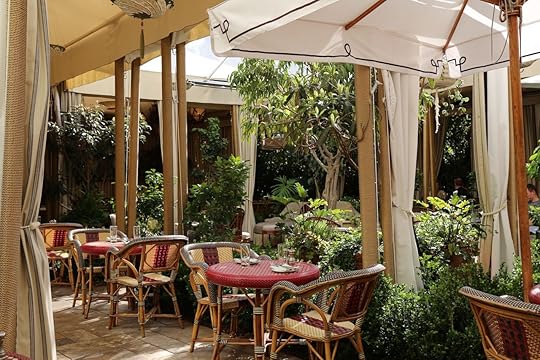
Photo: California Prod/Shutterstock
Forget breakfast. Brunch is where the celebs go, and no other patio is as rife with A-listers as The Restaurant at Chateau Marmont. There’s a good chance you’ll spot an Olsen twin, Rami Malek, or Lady Gaga while you sip mimosas — just don’t take their photo or you’ll be politely asked to leave. You can also get the ricotta-topped brioche toast with a side of celeb at Sqirl, a hipster cafe in Virgil Village that beckons Padma Lakshmi, Dave Franco, and Busy Philipps (yes, the celebs wait in line just like everyone else). Or there’s Farmshop, a brunch beacon and gourmet market inside the Brentwood Country Mart where Gwyneth, Reese, and Ashton Kutcher are regulars.
4. Or do power lunch with Kerry Washington.

Photo: Café Gratitude/Facebook
Some celebs want to stay hidden; others want to be seen. The Ivy on Robertson Blvd. is for the latter. Paparazzi camp out front of the see-and-been-seen patio for a shot of a less-popular Kardashian, NeNe Leakes, or one of the other Housewives. Just know the food is as D-list as the stars. Less desperate celebs lean towards health-conscious cafes like Gracias Madre West Hollywood, an all-vegan Mexican restaurant that serves coconut ceviche, mushroom fajitas, and a chance to see veg-loving celebs like Ellen DeGeneres and Natalie Portman. Another plant-based fave is Café Gratitude Larchmont where the likes of Beyoncé, Kerry Washington, and Anne Hathaway lunch on Buffalo cauliflower wings and eggplant parmesan focaccia.
5. Sweat with Jennifer Aniston.

Photo: HannaTor/Shutterstock
Runyon Canyon is the Holy Grail hiking trail for celebrity spotting. Tucked between the Hollywood Hills and the Sunset Strip, not only does it offer sweeping views of the city — hey, look, the Hollywood sign — but you might also pass a shirtless Jake Gyllenhaal or Charlize Theron walking her dogs. If indoor sweating with the stars is more your thing, LA has plenty of classes to choose from. Barry’s Bootcamp West Hollywood started the whole boutique fitness craze and continues to be a draw for celebs like Jessica Biel and Katie Holmes. Just be ready for the $30 drop-in rate.
For more of a dance cardio workout, celebs like Jennifer Garner and Khloe Kardashian swear by Body by Simone Brentwood ($28 drop-in). Pop into the Lululemon next door for a double sighting. The newest, coolest Tinseltown workout is Rise Nation West Hollywood, a 30-minute VersaClimber workout created by trainer Jason Walsh ($26 drop-in) that could have you climbing next to Jennifer Aniston, Mandy Moore, or Emma Stone.
6. Break bread with Matt Damon.
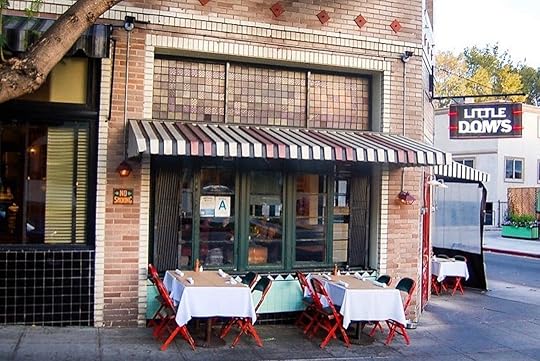
Photo: Little Dom’s/Facebook
Los Angeles is a total foodie capital with new-wave hotspots opening on the reg, but when it comes to dinner, celebs are all about old-school cool. Casa Vega in Sherman Oaks has been serving up Mexican food standbys and made-to-order margaritas by tuxedoed bartenders since 1956. Order The Tarantino, and don’t be surprised if you see the man himself (or Brad Pitt, Matt Damon, or Mila Kunis). For old-fashioned Italian, John Hamm and Ryan Gosling have been known to frequent Little Dom’s in Los Feliz.
Or, grab a red leather booth at Dan Tana’s in West Hollywood, preferably in the front room near the bar, for pasta — potentially alongside Cameron Diaz or George Clooney. For more of a modern vibe, David Chang’s new Korean Fusion restaurant, Majordomo, is housed in a warehouse space in Chinatown. Your best celeb bets are Jon Favreau, Seth Rogan, or Nick Kroll while your best menu bets are the bing and Korean short ribs. Gjelina, on Abbot Kinney, dishes up oysters, chic charcuterie boards, artisanal pizzas, and the chance to see Prince Harry, Julia Roberts, or Taylor Swift. Save room for the butterscotch pot de crème. So good.
7. Laugh alongside Amy Poehler.

Photo: 4kclips/Shutterstock
For a near-guaranteed sighting, your best bet is an LA comedy show. The Comedy Store on Sunset has been making comedy careers since 1972 (think Whoopi Goldberg, Chris Rock, and Jim Carrey), and the place continues to draw the biggest names in the biz (think Iliza Shlesinger, Nate Bargatze, and Patton Oswalt). You never know who’s going to drop in for a surprise set, which was Bill Burr on a recent evening.
For an even wilder ride, there’s the Upright Citizens Brigade, an improv group where Kate McKinnon, Ed Helms, and Ellie Kemper got their starts. Go to the Saturday ASSSSCAT show at the Franklin location ($14) to see performers like Matt Walsh (Veep), Lauren Lapkus (Orange is the New Black, Crashing), and Zach Woods (Silicon Valley). Even more famous celebs frequently show up in the audience, such as Amy Pohler.
8. Drink bubbly with Rihanna.
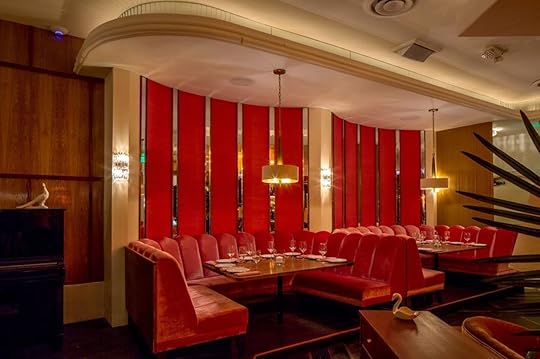
Photo: Delilah Los Angeles/Facebook
LA practically invented “the scene,” and whether you’re looking for live music or VIP booths, there’s a celeb bar for that. For timeless glamor and epic views of the city, The Tower Bar at Sunset Tower Hotel is bar none. This is the place to sip whiskey neat while listening to live jazz alongside, say, Orlando Bloom and Katy Perry. Speaking of jazz, Jeff Goldblum tickles the ivories most Wednesday nights at Rockwell Table & Stage in Los Feliz. It’s kind of a cheat, but the Fly guy (get it!) mingles with the crowd and even takes pics afterward.
For a new spin on a Sinatra-inspired nightclub, there’s The Nice Guy on La Cienega, a lavish lounge with deep booths and dim lighting where you just might glimpse Rihanna, Miley Cyrus, or Chrissy Teigen. The same owners operate Delilah, a modern-day supper club where Drake and Kendall Jenner have hosted birthday bashes. Just don’t snap a selfie — both spots have a strict no-photo policy. 

More like this: The ultimate guide to all things Korean in LA’s K-Town
The post The Oscars are coming, and these are the best places in LA to spot the stars appeared first on Matador Network.

World’s coldest cities

The world is a cold, cold place.
This isn’t just something you learn the first time your parents refuse to send you money to cover that month’s rent. It’s also something you learn when you venture to the far-north reaches of the planet any time during the winter. But just because a place registers daily temps in the negative 40s doesn’t necessarily mean it’s boring. Sure, cars might not work and you’ll literally freeze to death if you’re outside in the wrong clothes for more than a few minutes. But there is still fun to be had.
We took a look at Crystal Ski Holidays’ analysis of the coldest cities in the world, and decided to find out what, exactly, there was to do in those cities besides freeze. So bundle up, bring some brandy, and take a look at what to do in the world’s coldest cities.
9. Nur-Sultan, Kazakhstan
Average winter temperature: -14.2

Photo: akimov konstantin/Shutterstock
A little like a freezing cold Dubai, one of the newest capital cities in the world was built up mostly over the past two decades, and has the futuristic skyline to prove it. Walk from the Presidential Palace to the Khan-Shatyr Entertainment Center and you’ll stroll through glass towers and golden skyscrapers that feel miles away from a former Soviet republic. The most-photographed is Bayterek Tower, a 300-foot building topped with a metallic sphere you can take an elevator up to.
In addition to futuristic architecture, this city of 800,000 is also home to the world’s largest tent, which houses the city’s largest shopping mall complete with an indoor beach club. Take THAT Dubai ski hill! For a more historic look at the city, hit the National Museum of Kazakhstan, where you can see a full-scale display of the city’s skyline as miniatures, stand inside a yurt, and tour through its hall of gold.
8. Winnipeg, Manitoba, Canada
Average winter temperature: -21

Photo: Thamyris Salgueiro/Shutterstock
The only freezing city where you can watch a major professional sporting event, Winnipeg is easily the most visited city on the list. Not only because it has literally dozens of daily flights to the US, but also because it far and away has the most to do. It’s home to the Winnipeg Jets, and as the only game in town their games are sold-out affairs with passionate fans. It’s also home to the Canadian Museum for Human Rights, an architecturally stunning showcase of some of the most atrocious practices in human history.
Though polar bears are a big attraction further north in Manitoba, you can see some playing around daily at the Assiniboine Zoo. Or go to the place they make loonies and toonies at the Royal Canadian Mint. If you dressed warmly enough, you can wander the Exchange District, an old industrial area with turn-of-the-twentieth-century buildings that now house boutiques, coffee shops, and restaurants. Or check out the city’s wide variety of street art, a surprising find in one of the coldest cities in North America.
7. Norilsk, Russia
Average winter temperature: -23.8
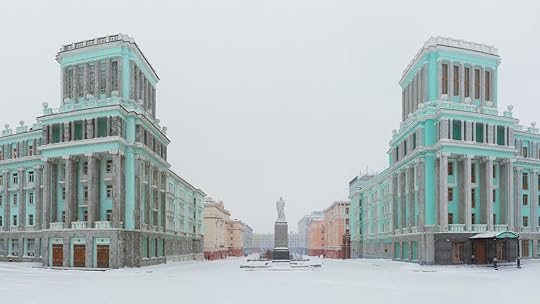
Photo: Andrei Stepanov/Shutterstock
Imagine, if you will, a depleted, rust-belt industrial town at the height of the last recession, covered in a perpetual cloud of nickel and copper particles. That would be a summer day in Norilsk, billed as Russia’s most polluted city and also among its most unwelcoming. Like, literally: The city is off limits for run-of-the-mill international tourists, and is only accessible via specialized tours through Russia’s north.
But, if you do have a brutally cold former Russian prison colony on your bucket list, you’ll find a handful of things worth doing here. One of the old gulags still sits in the city’s old section, and offers a harrowing look into Stalin-era punishments. You can go back even further in time at the ethnographic museum, learning the story of the indigenous peoples who lived here before the ground was exploited for minerals. The central boulevard was modeled after Nevsky Prospect in St. Petersburg, and offers a nice respite from the tenements. Though typically your tour guides will be escorting you everywhere, so what you do is going to be up to them.
6. Ulaanbaatar, Mongolia
Average winter temperature: -24.6

Photo: Pises Tungittipokai/Shutterstock
The largest freezing city in the world, Ulaanbaatar has all the amenities, restaurants, bars, and cultural attractions you’d expect in a capital city of 1.5 million. And as of this year, it should have a brand-spanking new version of the Chinggis Khaan International Airport to get you there easily. This modern city is one of the most unheralded destinations in Asia, where you can spend an afternoon strolling around Sukhbaatar Square and learn about the country’s history through its massive statues, Parliament Building, and Cultural Palace. Granted, if it’s below 25 that might not be a realistic option, so perhaps opt to peruse the 57,000 items at the National Museum of Mongolia.
Though nobody’s confusing Ulaanbaatar with Rodeo Drive, shopping here can still be a unique experience if you hit the State Department Store. The communist relic is now full of brightly colored capitalism, an exemplary display of the old ways fused with the new. You can also get a drink atop the Blue Sky Tower, complete with panoramic views of the expanding skyline. Or hit one of the city’s many hot pot restaurants, where you’ll cook meat and noodles in a boiling broth at your table.
5. / 4. Barrow, Alaska
Average winter temperature: -25

Photo: Agami Photo Agency/Shutterstock
America’s northernmost city — and its coldest — sits just south of the Arctic Circle on the shores of the Arctic Ocean. Also known as Utqiagvik, the town of 4,400 is accessible with daily flights from Fairbanks and in better weather via seaplane from other parts of the state. Barrow’s most notable landmark is the whale bone arch, a sort of Stonehenge of whale remnants erected as a tribute to the city’s whaling culture.
During winter you can take advantage of the 24 hours of darkness to hopefully get a show from the aurora borealis. Polar bears are also abundant near Barrow, and though they don’t come into the city you can take a tundra tour out to Point Barrow on the Arctic Ocean and spot some. You’ll also visit an old whaling camp and Arctic exploration base while you’re there. If you’d rather stay inside, you can visit the Barrow Arctic Science Consortium, and learn all about the environmental research going on in the area. Or spend some time at the Iñupiat Heritage Center, and learn about the native Alaskan people who make up most of the city’s population.
5. / 4. Harbin, China
Average winter temperature: -25

Photo: Haobo Wang/Shutterstock
Harbin might be the odd city on this list that’s actually better to visit when it’s cold, as February brings the Harbin International Ice and Snow Festival. Here you’ll find the largest celebration and display of snow and ice sculptures in the world, including entire cityscapes carved from ice and some sculptures reaching 150 feet tall. It draws 10 to 15 million visitors over its month-long run, making it one of the most-attended festivals in the world.
Aside from the festival, you can go skiing at Yabuli Ski Resort, one of the best ski hills in China. In town, you’ll find a city with heavy Russian and European influences, so much so that a stroll down Central Street feels a little more like Barcelona than northeast China. Except for the cold. If you’re all-in on ice, the Songbei Shangri-La Hotel offers the opportunity to eat in a restaurant made of ice, on chairs made from ice blocks. Or you can visit the snow-covered wonderland of the Dream Garden, where log cabins and stone huts make the whole place look like a fairy-tale.
3. Yellowknife, Northwest Territory, Canada
Average winter temperature: -27
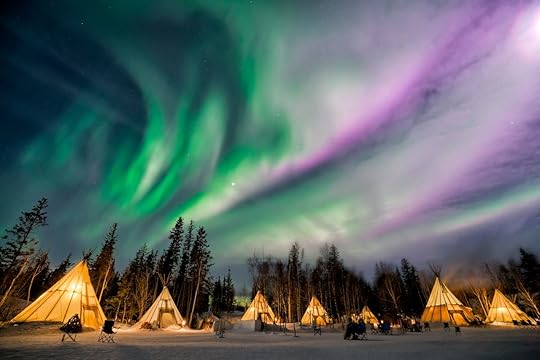
Photo: Ken Phung/Shutterstock
The largest city in Canada’s massive Northwest Territory is home to only 20,000 people, but its small-town charm is part of what makes it such a fun place to visit. The center of the action in Yellowknife is its Old Town, which only dates back to around the 1930s but is full of old log cabins and heated art galleries. You can grab a drink at the Woodyard Brewhouse to chat with locals, or stop for a selfie in front of the Bush Pilots Monument.
Yellowknife is, as you might imagine, also a top destination for viewing the aurora borealis, so much so that it has its own Aurora Viewing Village, complete with heated seats and cozy teepees. If the electrical storms aren’t cooperating, you can also create your own episode of Ice Road Truckers by taking a trip down the Dettah ice road, a frozen-over lake that connects Yellowknife to Dettah. You can also opt for indoor education at the Prince of Wales Heritage Centre, a small museum that teaches all about the history of the territory and why people decided to live there.
2. Yakutsk, Russia
Average winter temperature: -39
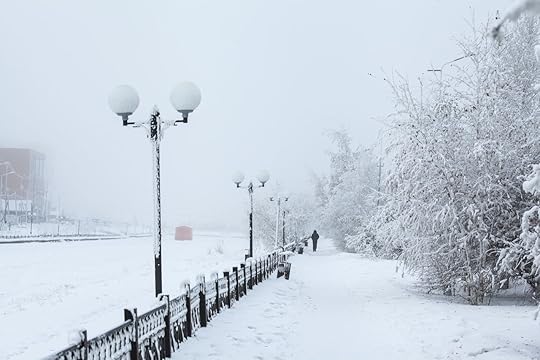
Photo: Valera Nevsky/Shutterstock
Those five degrees of warmth make a huge difference in livability, apparently, as the second-coldest city in the world boasts a population of nearly 300,000. That means you’ll not only find hotels here, but also a full-fledged international airport! Yakutsk offers a number of attractions too, from visiting the outdoor frozen fish market — and posing with frozen broad whitefish — to taking dog sled rides around the Chochur-Muran ethnographic complex.
Yakutsk is also a fantastic place to learn about the natural history of the far north, most notably at the Mammoth Museum, which features 12,000-year old mummified mammoths. You can find more mammoth stuff at the Museum of Local History of the North, specifically a full Tirekhtyakh mammoth skeleton, one of few in the world. A little bit out of town, visit the Lena Pillars, a UNESCO World Heritage site of jagged stone pillars set in the middle of a plain. The national park runs tours from the city, or you can attempt the two-to-five-hour drive yourself, part of which runs over a frozen-over Lena River.
1. Oymyakon, Russia
Average winter temperature: -44
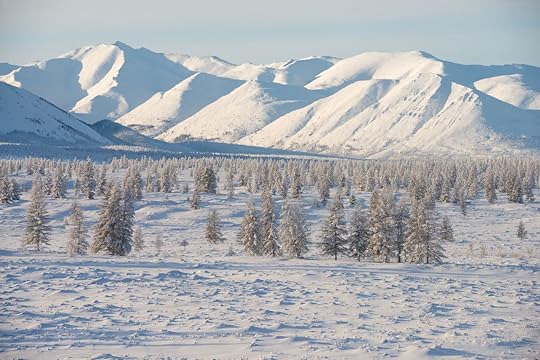
Photo: Tatiana Gasich/Shutterstock
The coldest inhabited place on Earth actually has a surprisingly robust tourism industry, made up mostly of people who want to go to the coldest inhabited place on Earth. It’s not exactly easy to make the trip to this village of 500 people set deep in Siberia, as most visitors come on guided tours of the Russian wilderness. There are no hotels, so you’ll have to arrange a homestay if you want to spend the night. And you’ll need to invest in some fur coats before you go.
For a tiny village, you’ll find a surprising number of things to do in Oymyakon, from jumping in the local “hot” springs to throwing boiling water in the air and watching it crystallize. You can also warm up in the local Russian bath, then run outside and jump in the snow to feel a hundred-degree temperature difference in a matter of seconds. But the most famous attraction is the Permafrost Kingdom, an underground crystal cave that’s actually warmer in the winter than the air above ground. It’s lit up in all sorts of trippy colors too, and has ice sculptures throughout. 

More like this: The absolute best places to ski in North America this winter
The post What to do in the world’s coldest cities appeared first on Matador Network.

China on track to eliminate plastic

China is taking serious action against plastic pollution by enacting new measures restricting the production, sale, and use of single-use plastics. The policy comes from the National Development and Reform Commission and the Ministry of Ecology and Environment, which declared that all plastic bags will be banned across China’s major cities by the end of 2020, and in smaller cities and towns by 2022. Markets selling fresh produce, however, won’t be forced to adhere to the ban until 2025.
The ban will also affect common plastic items like utensils, which will be slowly phased out. For example, by the end of this year the restaurant industry in China will be completely banned from using any single-use straws, and by 2025, cities across China will be required to reduce single-use plastics in restaurants by 30 percent.
In addition to tighter regulations, China is also investing in its recycling program and building more bases for resource utilization, to ensure more products are being reused in a sustainable fashion. 

More like this: 7 easy things you can do to be a more sustainable traveler at hotels
The post China tackles single-use plastic pollution in sweeping reforms appeared first on Matador Network.

Matador Network's Blog
- Matador Network's profile
- 6 followers



